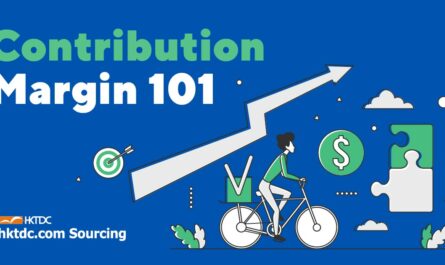Cash flow is the movement of money in and out of a business. Managing cash flow is essential to running a successful and growing business, all while maintaining a steady and sufficient cash reserve to meet operating expenses.
Learn more about how the cash flow management process works and some effective cashflow management strategies and techniques in this article.
Cash flow is either positive or negative. Positive cash flow is when cash inflows exceed cash outflows. Negative cash flow is the reverse. Cash flow management is the process of tracking, analysing, and controlling cash movements in order to maintain adequate liquidity to run daily operations and fulfil short-term obligations.
Successful cash flow management ensures a healthy cash position, allowing businesses to cover operating costs, fulfil financial commitments, make smart investments, and prepare for future financial challenges. Effective cash flow management guarantees the long-term financial health, stability, and sustainability of a business.
Cash Flow Categories
- Operating cash flow, or cash flow from operations, such as the sale of goods and services.
- Financing cash flow, or cash flow from financing activities, such as bank loans, stock sales, and paying of dividends.
- Investing cash flow, or cash made from/spent on investment-related activities, such as asset sales.
Common Cash Flow Problems
The most common causes of poor or negative cash flow are:
- Weak or fluctuating sales
- Excessive inventory, which incurs additional expenses related to storage and insurance
- High debt levels, resulting in repayment challenges
- Payment delays and late fees on account of poor payable and receivable management
- Cash shortfalls as a result of poor planning
- Over-investment in fixed assets
- Inaccurate tax filings, leading to penalties
- Idle cash, or money that isn’t earning a return on investment
If not addressed in time, cash flow problems can have a significant impact on company finances and business continuity.

Techniques for Managing Cash Flow
An effective cash flow management process not only tracks cash movement but also predicts future needs and optimises accounts receivable and accounts payable. Here are 3 of them:
1. Cash Flow Forecasting
This technique involves predicting net flows and balances in the future. Businesses use cash flow forecasts to anticipate cash inflows and outflows during an impending period, pick on early signs of a potential shortfall, and take corrective action.
Apart from anticipating cash shortages, predicting future cash flow also allows companies to plan for cash surpluses that can fuel business growth.
Predicting the future isn’t an exact science, but cash flow forecasting has proved an effective method of future planning. By leveraging historical data, industry trends, and economic conditions, it is possible to plan confidently for future operational, financial, and investment activities. Cash forecasts are crucial if one hopes to have enough cash without resorting to borrowings and asset sales.
How to create a cash flow forecast
Once the reporting period has been picked, follow these steps:
- Take note of the opening cash balance.
- List all anticipated cash inflows for the period, including cash receipts, tax refunds, incoming investments or financing, etc.
- List all expected cash outflows, including operating costs. Don’t forget non-regular expenses like taxes, maintenance costs, upcoming fees, etc.
- Add up the incoming and outgoing cash separately. Then, take the opening balance, add the inflows and subtract the outflows. This is your closing balance.
Next comes analysing the forecast. Study net cash flow (inflows minus outflows) for clarity on how cash reserves went up or down. Once a forecast has been acted upon, don’t forget to compare it to what actually happened during the reporting period. If the projection was incorrect, reflect upon what you miscalculated. This will ensure the next forecast is more accurate.
Neglecting cash flow projections amounts to poor cash flow management as they directly impact decision-making and budgeting.

2. Managing Accounts Payable
Accounts payable has a direct connection with cash flow because it represents money owed to vendors and suppliers. The company records it when it receives an invoice for goods/services bought on credit, not when it pays for the purchase. Effective accounts payable management is all about getting payment timings right. Paying too early might result in negative cash flow. But delaying payment to avoid a cash shortfall might result in additional expenses (late fees, interest, etc) and damage the relationship with suppliers.
The accounts payable department is responsible for finding a middle ground. They must understand that the account payable workflow isn’t only concerned with invoice and payment processing but also negotiating favourable payment terms with suppliers, such as early payment discounts as an incentive for prompt bill settlement.
3. Managing Accounts Receivable
Accounts receivable represents cash owed to a company from goods/services sold but not yet paid for. Receivables contribute to positive cash flow. Failing to collect payments on time can strain a company’s cash reserves and affect operations.
The accounts receivable process involves sending invoices, tracking payments, and following up with customers. Here too, setting favourable payment terms is of vital importance.
One way to optimise accounts receivable is to adopt cash flow management software that automates invoicing and payments. Clearly communicating payment terms to customers, using fast payment applications, and offering early payment discounts also helps. Such practices will not only optimise cash flow but also win the trust and loyalty of customers.
This article is originally published by Aspire:
Aspire is the all-in-one finance platform for modern businesses, helping over 15,000 companies save time and money with international payments, expense management, payable management, and receivable management solutions — accessible via a single, user-friendly account.
Start sourcing on our e-Marketplace with reasonable pricing, for the best interest of your company:









